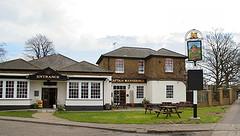 Respiratory picture – repeated apneas, esternais and subcostais bradipnia, taquipnia, retractions, beating of nasal wings, cianose, increase of the necessity of oxygen and the parameters of the respirator. Neurological picture – hipotonia, convulsions. Mannering picture – irritability, lethargy. Gastrointestinal picture – abdominal distenso, vomits, gastric residue, refusal of suction, jaundice without definite cause and with predominance of the conjugated fraction. Cardiovascular picture – cutaneous pallor, cold and sudoreica skin, hipotenso, bigger hair filling time of what 2 seconds. Signals of bleed – similar picture to the one of coagulation to intravascular spread.
Respiratory picture – repeated apneas, esternais and subcostais bradipnia, taquipnia, retractions, beating of nasal wings, cianose, increase of the necessity of oxygen and the parameters of the respirator. Neurological picture – hipotonia, convulsions. Mannering picture – irritability, lethargy. Gastrointestinal picture – abdominal distenso, vomits, gastric residue, refusal of suction, jaundice without definite cause and with predominance of the conjugated fraction. Cardiovascular picture – cutaneous pallor, cold and sudoreica skin, hipotenso, bigger hair filling time of what 2 seconds. Signals of bleed – similar picture to the one of coagulation to intravascular spread.
Subjective evaluation? ‘ ‘ RN seems that he is not bem’ ‘ , although to be a subjective evaluation, diverse authors classify this item as one of most excellent for the clinical diagnosis of sepse. These signals can also vary of light the intense ones, depending on the duration of the infection, the virulence and the accidental agent and garu of maturity of the mechanism of defense of the host. In the neonatal period, these manifestations can be inconvenient, therefore the signals if coat with great inespecificidade and can be induced for not infectious insults, what it makes it difficult the discovery and precocious treatment of the infection in the RN, therefore some illnesses can be manisfestar with these symptoms. Therefore if it makes necessary the clinical and comparative inquiry of the signals, as well as of the risk factors that unchain a possible infection so that this can in time recognized and be treated, before taking the neonato the death. Factors of risk for sepse neonatal In the life intrauterine and during the birth, the embryo and the RN gifts in the maternal treatment can be colonized by microorganisms genital that can colonize the passage of the childbirth canal, or by the transplacentria way (hematognica).